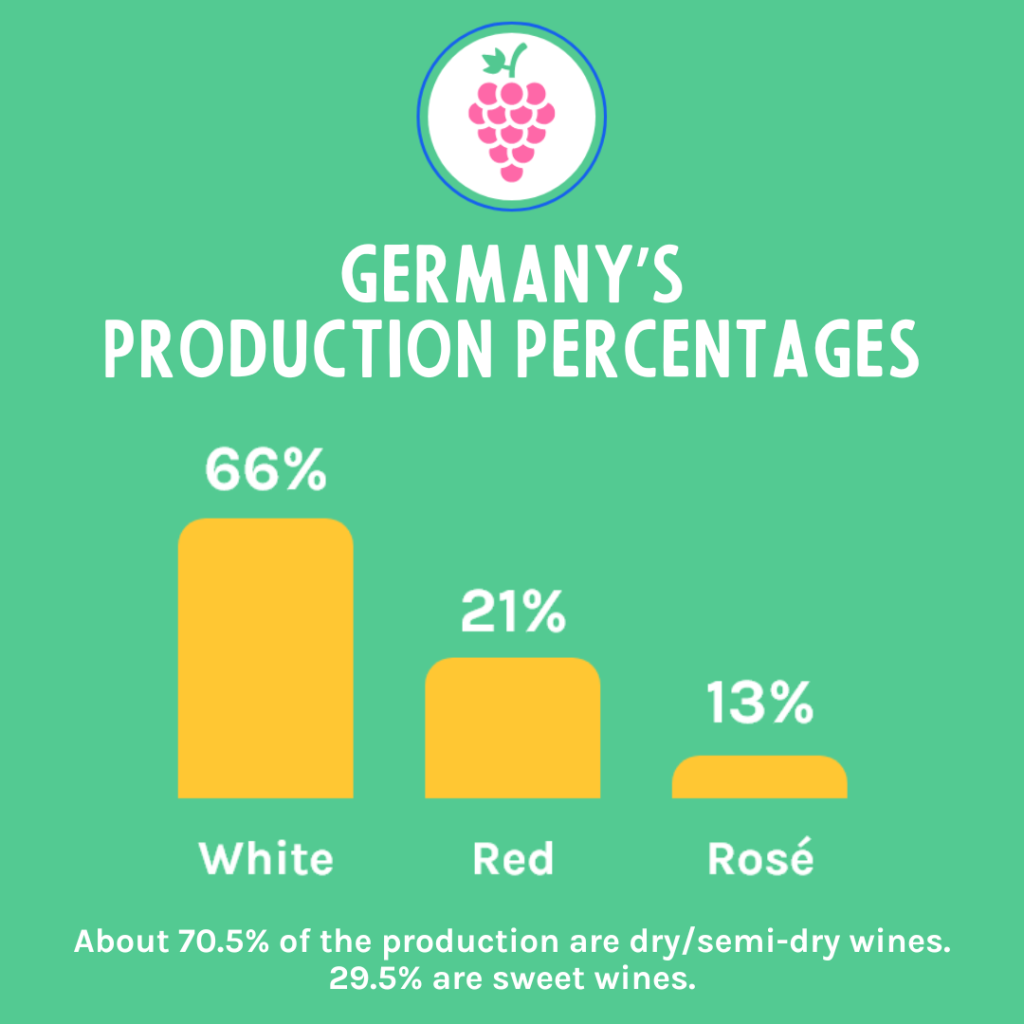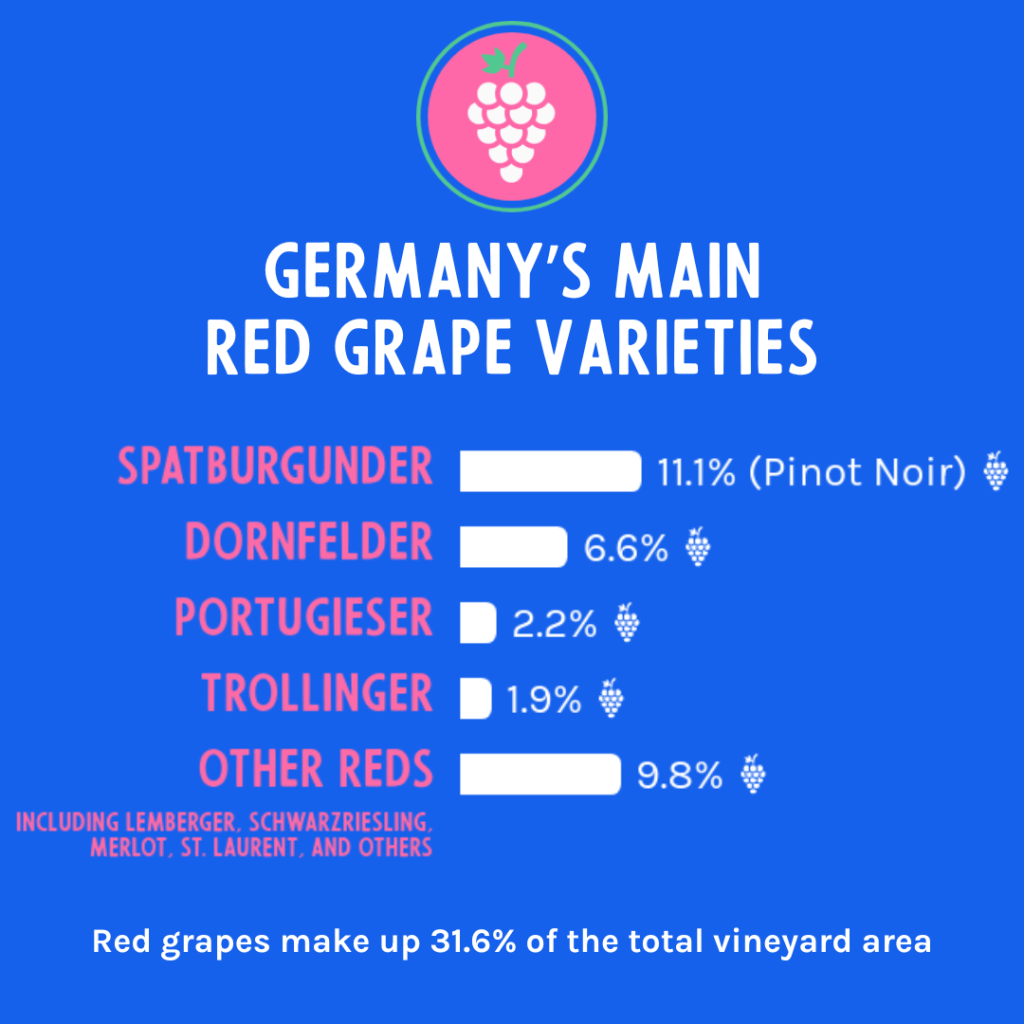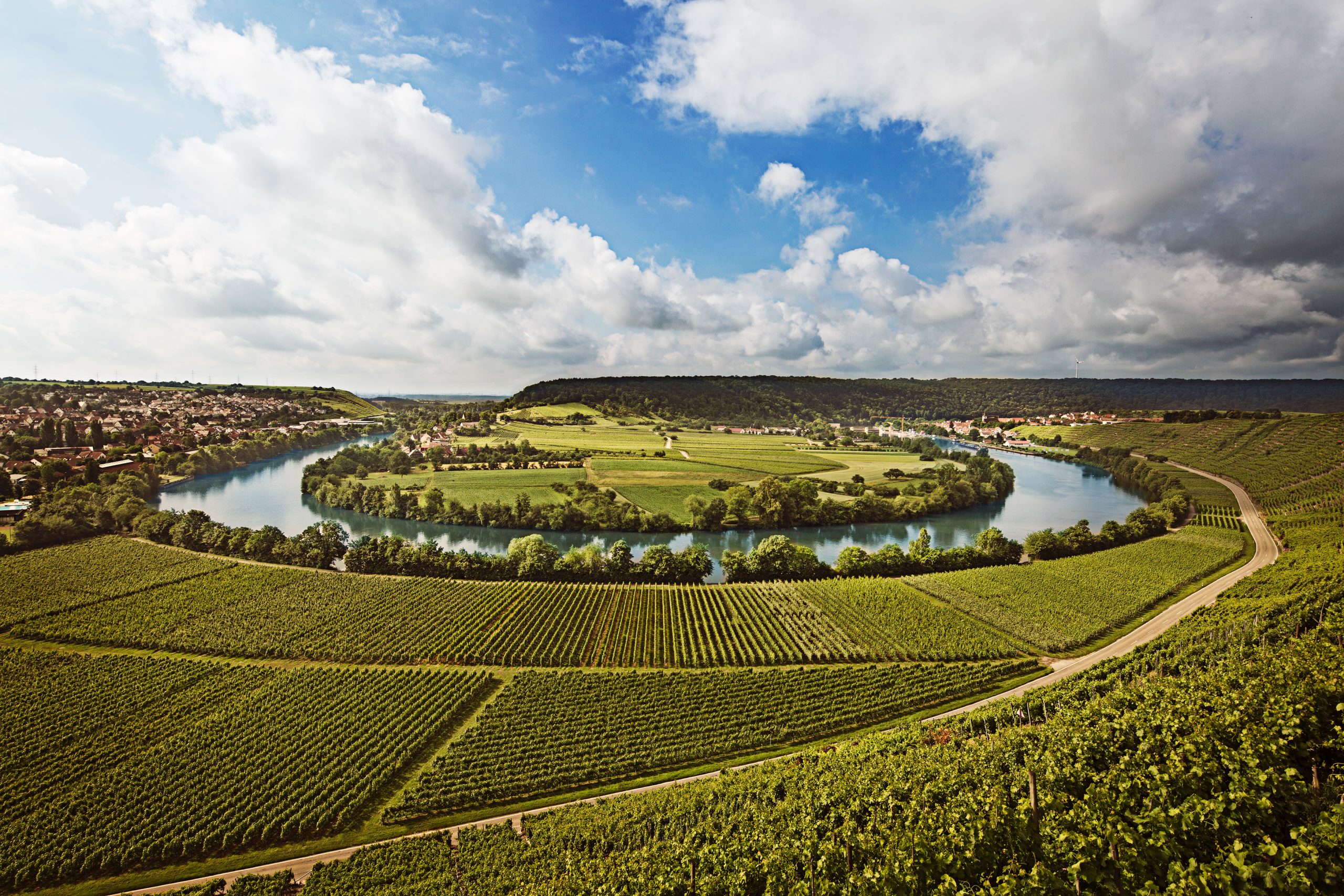Photo Source: German Wine Institute
Climate
As one of the most northerly wine making areas in the world, Germany features a cool climate. The ripening of grapes this far north is mainly facilitated by the warm Gulf Stream and its moderating impact on the climate of Western Europe. During the growing season, there is much less sunshine in Germany than in more southerly winegrowing regions, and the bulk of precipitation occurs in the summer. Rainfall generally declines as harvest approaches in the late summer or early fall.
These unique climatic factors enable grapes to ripen slowly and retain their vibrant acidity levels. This produces well-defined aromatics and flavors and enhances the longevity of Germany’s primary varieties: Riesling, Müller Thurgau, Weissburgunder (Pinot Blanc), Grauburgunder (Pinot Gris), and Spätburgunder (Pinot Noir).

A Lay of the Land
Germany’s 13 winegrowing regions are mostly located in the southwest, near the borders of France and Switzerland, though the changing climate is making the entire country fit for viticulture. Some of Germany’s most well-known Riesling producing regions, the Rheingau, Rheinhessen and Nahe are characterized by cool, continental climates with varied soils and favorable conditions making it possible to grow many other varieties. While sunshine is increasingly abundant, growers plant vineyards on inclines on south and southwest-facing slopes in order to encourage ripening and ensure the grapes receive as much sunlight as possible.
The famous Mosel region is especially unique, home to one of Germany’s warmest climates regulated by the Mosel river and the region’s sheltered valley location. Featuring the steepest vineyards in the world, some of the Mosel’s vines are planted at an astounding 70-degree gradient, where they depend on the river to reflect heat from the sun and ripen grapes.
The regions of the Ahr, Baden, Württemberg, and parts of the Pfalz are a few of the best-known wine producing regions of Germany and are not to be forgotten. Here, winemakers produce exceptional Spätburgunder – among many other varieties – thanks to the relatively sunny, dry climate that’s perfect for ripening Pinots.
Germany’s Red Varieties

Though best known for its white wines, 31.6% of Germany’s vineyard area is dedicated to red varieties. Spätburgunder, or Pinot Noir, is Germany’s most widely cultivated red variety and the second most widely planted grape in the country. Germany ranks third worldwide in area devoted to Pinot Noir, thanks to regions like Baden and the Ahr.
Other important red grape varieties include Dornfelder, Portugieser, and Trollinger. Originally bred in 1955, Dornfelder has become known as a classic German grape that can be vinified in all styles. Württemberg’s premier red grape variety, Trollinger is almost exclusively grown in the region with a delicate scent reminiscent of strawberry or cherry. Trollinger usually ranges from light brick red to pale ruby red and is meant to be enjoyed young.
Germany’s White Varieties

Riesling is the flagship German grape and is the most widely planted white variety in the country, growing in each of the 13 winegrowing regions. Riesling is often misunderstood and thought of strictly as a sweet wine, but the versatile grape can be vinified in any style; most Rieslings made in Germany today are classified as dry.
Germany is quickly becoming well known for its Pinot varieties including Pinot Blanc (or Weissburgunder) and Pinot Gris (or Grauburgunder), along with plantings of other classic favorites including Chardonnay and Sauvignon Blanc. All of these white varieties – and occasionally reds – can be used to produce Sekt, or sparkling wine. With Germans drinking more sparkling wine per capita than any other market in the world, it’s safe to say the country knows a thing or two about bubbly.

Photo Source: German Wine Institute
Boasting both well-structured reds and whites with a balanced acidity, German wines are perfect for any occasion. What are you waiting for?
Thirsty for more? Follow Clink Different’s Instagram and Facebook to stay up-to-date on the latest blogs and upcoming events.
